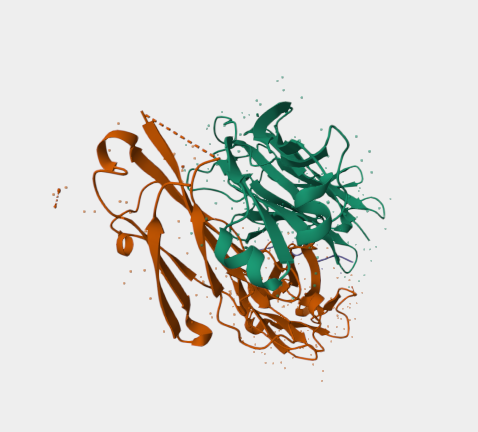Key features and details | |
Cat. No. | MABL-2418 |
Name | Anti-MUC1 mAbs |
Clone No. | AFD- C595 |
From | Recombinant Antibody |
Isotype | Engineer antibody |
Application | RIA, therapeutic, WB, ELISA, IF, IHC |
Species Reactivity | Human |
Basic Information | |
Specificity | This antibody is specific for human MUC1 epitope 'TRPA'. It has a binding site that closely resembles the binding site of NCRC-11. The alpha subunit of MUC1 has cell adhesive properties. Can act both as an adhesion and an anti-adhesion protein. May provide a protective layer on epithelial cells against bacterial and enzyme attack. The beta subunit of MUC-1 contains a C-terminal domain which is involved in cell signaling, through phosphorylations and protein-protein interactions. Modulates signaling in ERK, SRC and NF-kappa-B pathways. In activated T-cells, influences directly or indirectly the Ras/MAPK pathway. Promotes tumor progression. Regulates TP53-mediated transcription and determines cell fate in the genotoxic stress response. Binds, together with KLF4, the PE21 promoter element of TP53 and represses TP53 activity. |
Alternative Name | Mucin-1; Breast carcinoma-associated antigen DF3; Cancer antigen 15-3; CA 15-3; Carcinoma-associated mucin; Episialin; H23AG; Krebs von den Lungen-6; KL-6; PEMT; Peanut- reactive urinary mucin; PUM; Polymorphic epithelial mucin; PEM; Tumor-associated epithelial membrane antigen; EMA; Tumor-associated mucin; CD227 |
UniProt | P15941 |
Immunogen | This antibody was raised by immunizing mice with NCRC-I 1-defined epithelial antigen. |
Application Notes | To compare this antibody to another antibody (NCRC-11) in its ability to bind its antigen, immunocytochemistry was preformed on both breast carcinoma and normal tissue using the mouse version of this antibody. Furthermore, western blotting was preformed on antigens defined by antibody clone NCRC-11 using the mouse version of this antibody (Price et al, 1990; pmid:1692469). To test the ability of this antibody to deliver therapeutic payloads to ovarian cancer cells, an in vivo assay was preformed in mice inoculated with OVCAR3 using the mouse version of this antibody bound to bismuth 213 (Song et al, 2008; pmid:18347423). To determine MUC-1 expression in HNSCC, immunohistochemistry was preformed on tumors from the larynx, the oral cavity and the pharynx using the mouse version of this antibody. Furthermore, western blotting was preformed with the mouse version of this antibody to identificate tumor antigens in circulating immune complexes (Rabassa et al, 2006; pmid:17064405). |
Antibody First Published | Price et al. C595--a monoclonal antibody against the protein core of human urinary epithelial mucin commonly expressed in breast carcinomas. Br J Cancer. 1990 May;61(5):681-6. PMID:1692469 |
Note on publication | An IgG3 monoclonal antibody, C595, was prepared against urinary mucins isolated on a NCRC-11 antibody affinity column, and this 'second generation' antibody was shown to have a very similar pattern of reactivity to the original NCRC-11 antibody. |
COA Information (For reference only, actual COA shall prevail) | |
Size | 100 μg Purified antibody. |
Concentration | 1 mg/ml. |
Purification | Protein A affinity purified |
Buffer | PBS with 0.02% Proclin 300. |
Concentration | 1 mg/ml. |
Storage Recommendation | Store at 4⁰C for up to 3 months. For longer storage, aliquot and store at - 20⁰C. |



